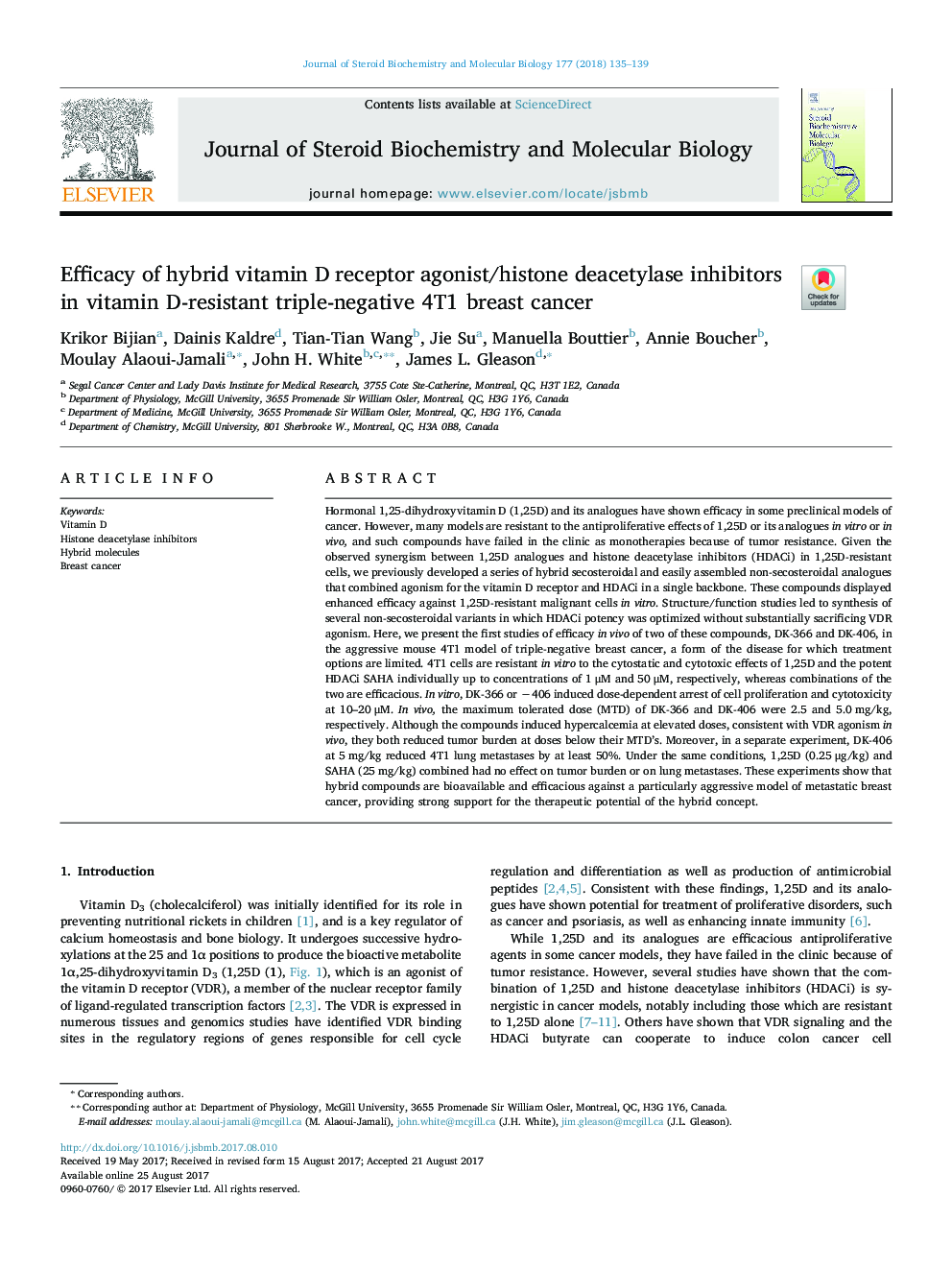| Article ID | Journal | Published Year | Pages | File Type |
|---|---|---|---|---|
| 8337888 | The Journal of Steroid Biochemistry and Molecular Biology | 2018 | 5 Pages |
Abstract
Hormonal 1,25-dihydroxyvitamin D (1,25D) and its analogues have shown efficacy in some preclinical models of cancer. However, many models are resistant to the antiproliferative effects of 1,25D or its analogues in vitro or in vivo, and such compounds have failed in the clinic as monotherapies because of tumor resistance. Given the observed synergism between 1,25D analogues and histone deacetylase inhibitors (HDACi) in 1,25D-resistant cells, we previously developed a series of hybrid secosteroidal and easily assembled non-secosteroidal analogues that combined agonism for the vitamin D receptor and HDACi in a single backbone. These compounds displayed enhanced efficacy against 1,25D-resistant malignant cells in vitro. Structure/function studies led to synthesis of several non-secosteroidal variants in which HDACi potency was optimized without substantially sacrificing VDR agonism. Here, we present the first studies of efficacy in vivo of two of these compounds, DK-366 and DK-406, in the aggressive mouse 4T1 model of triple-negative breast cancer, a form of the disease for which treatment options are limited. 4T1 cells are resistant in vitro to the cytostatic and cytotoxic effects of 1,25D and the potent HDACi SAHA individually up to concentrations of 1 μM and 50 μM, respectively, whereas combinations of the two are efficacious. In vitro, DK-366 or â406 induced dose-dependent arrest of cell proliferation and cytotoxicity at 10-20 μM. In vivo, the maximum tolerated dose (MTD) of DK-366 and DK-406 were 2.5 and 5.0 mg/kg, respectively. Although the compounds induced hypercalcemia at elevated doses, consistent with VDR agonism in vivo, they both reduced tumor burden at doses below their MTD's. Moreover, in a separate experiment, DK-406 at 5 mg/kg reduced 4T1 lung metastases by at least 50%. Under the same conditions, 1,25D (0.25 μg/kg) and SAHA (25 mg/kg) combined had no effect on tumor burden or on lung metastases. These experiments show that hybrid compounds are bioavailable and efficacious against a particularly aggressive model of metastatic breast cancer, providing strong support for the therapeutic potential of the hybrid concept.
Related Topics
Life Sciences
Biochemistry, Genetics and Molecular Biology
Biochemistry
Authors
Krikor Bijian, Dainis Kaldre, Tian-Tian Wang, Jie Su, Manuella Bouttier, Annie Boucher, Moulay Alaoui-Jamali, John H. White, James L. Gleason,
